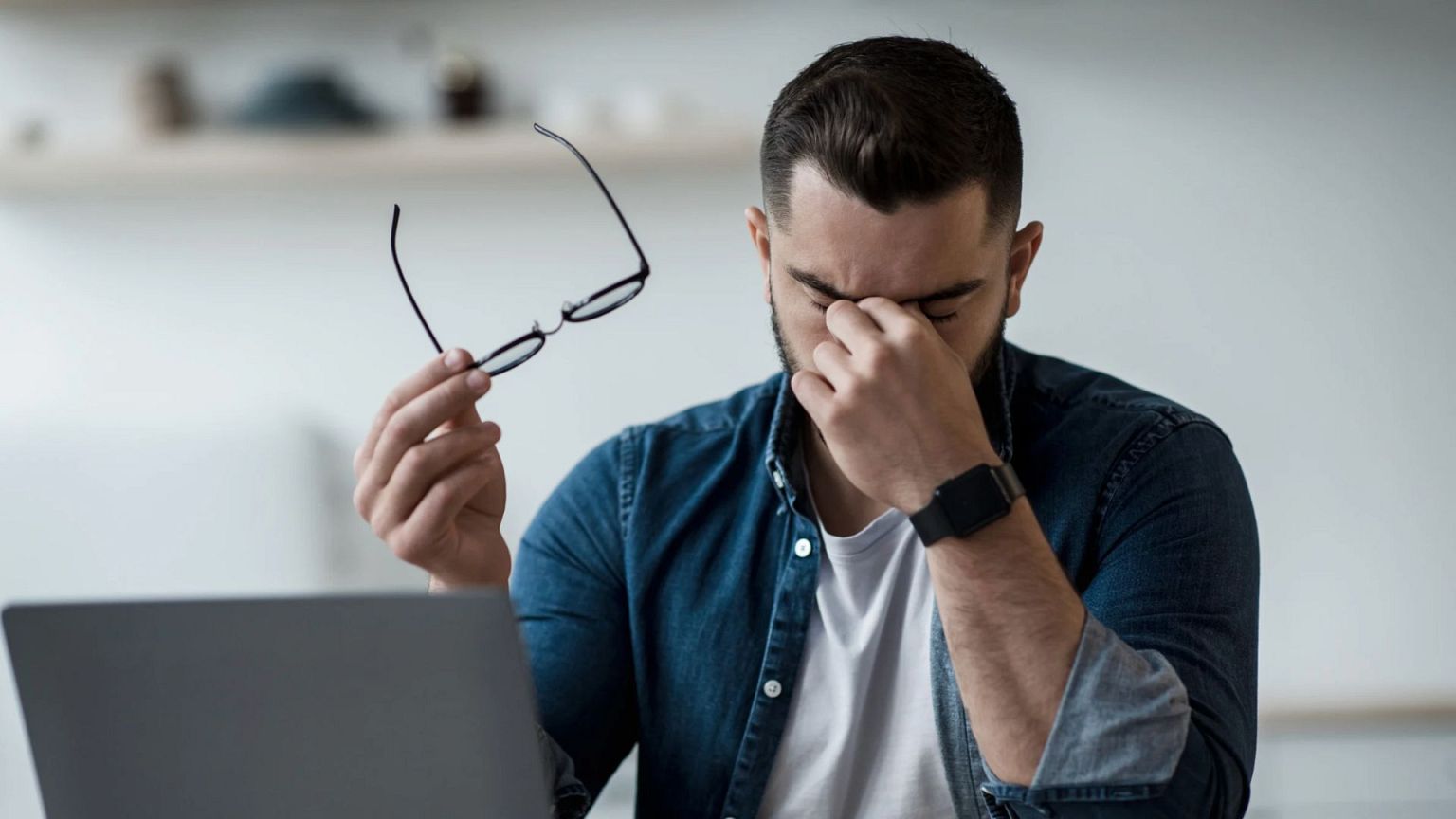Health
Protect Your Vision: 5 Essential Tips for Screen Users

Screen time has surged dramatically in recent years, with the average adult now spending over six hours a day engaged with various digital devices. This increase, fueled by the rise of remote work and online communication platforms, has heightened concerns about eye health. According to optometrist Shahina Pardhan, who leads the Vision and Eye Research Institute at Anglia Ruskin University, the strain on our eyes can lead to significant discomfort and long-term issues.
The condition known as Computer Vision Syndrome (CVS), also referred to as digital eye strain, affects many individuals. Symptoms can range from dry, irritated eyes to headaches and blurred vision. While these issues often seem inevitable in a screen-dominated world, there are effective measures individuals can take to protect their vision.
Implement the 20-20-20 Rule
One of the most recommended strategies to alleviate digital eye strain is the 20-20-20 rule, endorsed by the American Optometric Association. This guideline suggests that every 20 minutes, individuals should focus on something at least 20 feet away for a minimum of 20 seconds. Research indicates that applying this technique can significantly relieve symptoms associated with CVS. Pardhan explains, “When you look at something around 20 feet away, you’re actually relaxing those eye muscles.”
Although the effectiveness of this method for enhancing tear film stability is debated, it remains a simple yet powerful practice for giving your eyes a break.
Optimize Your Workspace
The setup of your workspace plays a crucial role in eye health. Poor lighting, inappropriate screen angles, and excessive glare are significant contributors to digital eye strain. Pardhan advises keeping your screen at eye level, regardless of whether you are using a smartphone or a computer. “Tilting your head down can put a lot of strain on the neck, increasing stress on the spine and shoulders,” she adds.
To mitigate glare, consider using an anti-reflective screen filter or adjusting the lighting in your workspace to ensure it is soft and indirect. If you work near a window, avoid positioning your screen directly in front of or behind it to reduce reflections.
Increase Your Blink Rate
Blinking is essential for eye lubrication, yet research shows that people can blink as much as 66% less when focused on screens. The average blink rate drops from 15 to 20 times per minute to as few as four to six times while working at a computer. To combat dryness, Pardhan suggests placing reminders near your workspace, such as notes saying “Blink!” or visual cues that encourage you to pause and blink more frequently.
Additionally, maintaining a humid environment can be beneficial. Using a humidifier or placing a bowl of water in your workspace can help prevent dry air, making it easier for your eyes to stay comfortable.
Utilize Blue Light Filters
Blue light emitted from LED screens can contribute to eye discomfort and potentially lead to retinal stress. Pardhan notes that using very bright screens in dark environments can be particularly harsh. Most modern devices now offer night mode or blue light filter settings, which can reduce exposure during evening hours. Wearing blue light blocking glasses, especially at night, can provide further protection.
It is important to note that while blue light filters can help reduce discomfort, they do not prevent serious eye diseases like age-related macular degeneration.
Practice Mindful Device Usage
Even during leisure time, many people continue to engage with screens, often without realizing the cumulative effects. Reducing non-essential screen time outside of work hours can significantly benefit your eye health. Start by utilizing built-in tools on devices that track time spent on various applications.
Apps such as the Forest app incentivize users to stay off their phones by allowing them to “plant a tree” that grows as long as they remain distraction-free. Conversely, the OneSec app introduces a brief delay before opening apps like Instagram or TikTok, giving users a moment to reconsider whether they want to engage.
By adopting these strategies, individuals can take proactive steps to protect their vision in an increasingly screen-heavy world. As the reliance on digital devices continues to grow, prioritizing eye health remains more important than ever.
-

 Top Stories3 months ago
Top Stories3 months agoTributes Surge for 9-Year-Old Leon Briody After Cancer Battle
-

 Entertainment4 months ago
Entertainment4 months agoAimee Osbourne Joins Family for Emotional Tribute to Ozzy
-

 Politics4 months ago
Politics4 months agoDanny Healy-Rae Considers Complaint After Altercation with Garda
-

 Top Stories4 months ago
Top Stories4 months agoIreland Enjoys Summer Heat as Hurricane Erin Approaches Atlantic
-

 World5 months ago
World5 months agoHawaii Commemorates 80 Years Since Hiroshima Bombing with Ceremony
-

 Top Stories3 months ago
Top Stories3 months agoNewcastle West Woman Patricia Foley Found Safe After Urgent Search
-

 Top Stories5 months ago
Top Stories5 months agoFianna Fáil TDs Urgently Consider Maire Geoghegan-Quinn for Presidency
-

 World5 months ago
World5 months agoCouple Convicted of Murdering Two-Year-Old Grandson in Wales
-

 World5 months ago
World5 months agoGaza Aid Distribution Tragedy: 20 Killed Amid Ongoing Violence
-

 World5 months ago
World5 months agoAristocrat Constance Marten and Partner Convicted of Infant Murder
-

 Top Stories4 months ago
Top Stories4 months agoClimbing Errigal: A Must-Do Summer Adventure in Donegal
-

 Top Stories4 months ago
Top Stories4 months agoHike Donegal’s Errigal Mountain NOW for Unforgettable Summer Views









